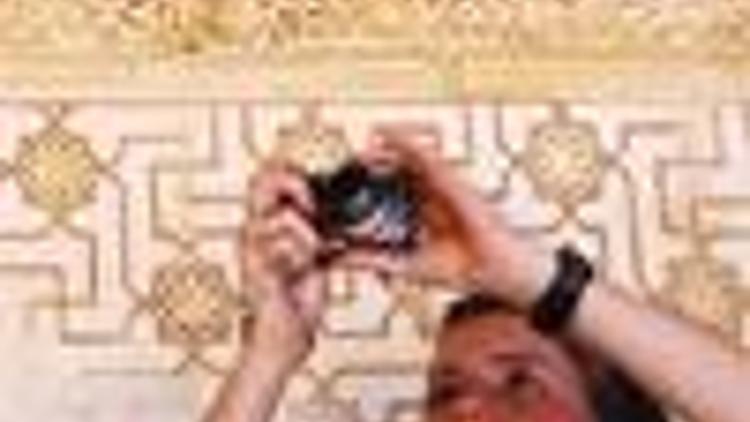Alhambra inscriptions decoded
Güncelleme Tarihi:

AFP
Oluşturulma Tarihi: Nisan 06, 2009 00:00
Researchers armed with modern technology such as digital cameras and 3D laser scanners have embarked on a mission to catalog and decipher for the first time the words that adorn Spain's most-visited tourist attraction.
For centuries, visitors to the Alhambra fortress-palace in Granada, built by Spain's medieval Moorish rulers, have wondered what the thousands of Arabic inscriptions carved into its walls and ceilings mean.
What the researchers have found so far is that, contrary to what was widely believed, verses from the Koran and poetry represent only a tiny minority of the messages in classical Arabic that cover the Alhambra, Europe's jewel of Muslim architecture.
About the Koran verses, Juan Castilla an investigator with the School of Arabic Studies at Spain's Higher Scientific Research Council, which is directing the project, said, "They make up not even 10 percent of what has been studied so far."
Instead, the phrase that appears most frequently is the motto of the Nasrid dynasty, which ruled Granada from 1238 until the Spanish re-conquered the city in 1492, "There is no victor but Allah."
"It is repeated hundreds of times," said Castilla, whose team has so far decoded 3,116 inscriptions of the roughly 10,000 that cover the sprawling complex since work on the project began in 2002. The next most common messages are single words such as, "perpetual happiness," which are thought to be expressions of divine wishes for the Muslim rulers of Granada.
Many other inscriptions consist of aphorisms, terse sayings embodying a general truth, such as "Be sparse in words and you will go in peace" and "Rejoice in good fortune, because Allah helps you."
Until now there have only been partial studies of what the inscriptions meant, including one study ordered by Catholic monarchs Ferdinand and Isabella who sought to purge Spain of Muslims after the conquest of Granada in 1492. "It seems incredible that there is no exhaustive catalog [of the inscriptions] in the 21st century," said Castilla.
Further complicating the task is the fact that artisans who did the engraving used an elaborately cursive script, which can be difficult to read. Calligraphy was a major art form in a culture that banned human images.
The researchers hope to have 65 percent of the inscriptions cataloged and translated into Spanish by the end of the year and the entire project finished in 2011.
What the researchers have found so far is that, contrary to what was widely believed, verses from the Koran and poetry represent only a tiny minority of the messages in classical Arabic that cover the Alhambra, Europe's jewel of Muslim architecture.
About the Koran verses, Juan Castilla an investigator with the School of Arabic Studies at Spain's Higher Scientific Research Council, which is directing the project, said, "They make up not even 10 percent of what has been studied so far."
Instead, the phrase that appears most frequently is the motto of the Nasrid dynasty, which ruled Granada from 1238 until the Spanish re-conquered the city in 1492, "There is no victor but Allah."
"It is repeated hundreds of times," said Castilla, whose team has so far decoded 3,116 inscriptions of the roughly 10,000 that cover the sprawling complex since work on the project began in 2002. The next most common messages are single words such as, "perpetual happiness," which are thought to be expressions of divine wishes for the Muslim rulers of Granada.
Many other inscriptions consist of aphorisms, terse sayings embodying a general truth, such as "Be sparse in words and you will go in peace" and "Rejoice in good fortune, because Allah helps you."
Until now there have only been partial studies of what the inscriptions meant, including one study ordered by Catholic monarchs Ferdinand and Isabella who sought to purge Spain of Muslims after the conquest of Granada in 1492. "It seems incredible that there is no exhaustive catalog [of the inscriptions] in the 21st century," said Castilla.
Further complicating the task is the fact that artisans who did the engraving used an elaborately cursive script, which can be difficult to read. Calligraphy was a major art form in a culture that banned human images.
The researchers hope to have 65 percent of the inscriptions cataloged and translated into Spanish by the end of the year and the entire project finished in 2011.

